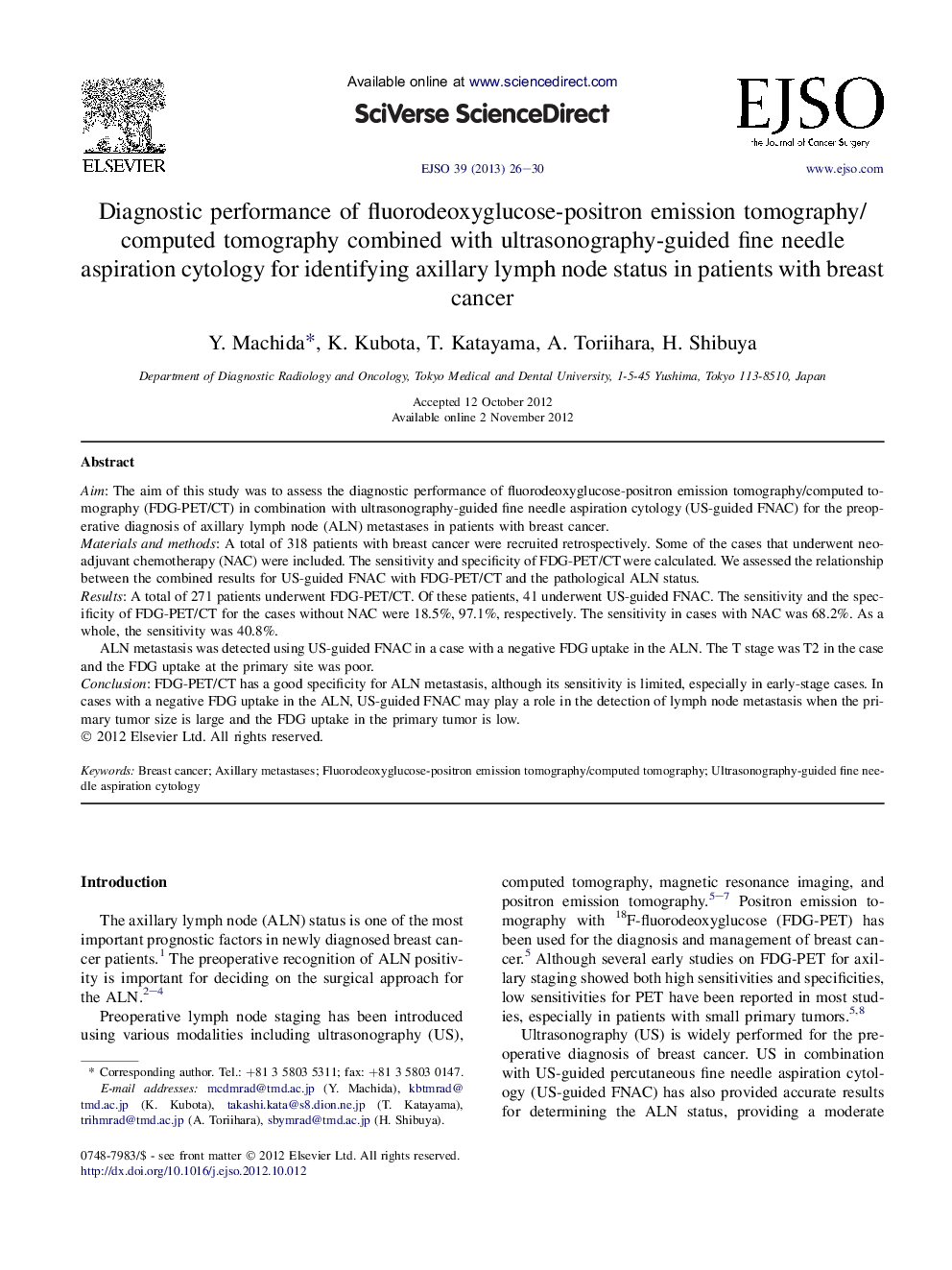| Article ID | Journal | Published Year | Pages | File Type |
|---|---|---|---|---|
| 3985347 | European Journal of Surgical Oncology (EJSO) | 2013 | 5 Pages |
AimThe aim of this study was to assess the diagnostic performance of fluorodeoxyglucose-positron emission tomography/computed tomography (FDG-PET/CT) in combination with ultrasonography-guided fine needle aspiration cytology (US-guided FNAC) for the preoperative diagnosis of axillary lymph node (ALN) metastases in patients with breast cancer.Materials and methodsA total of 318 patients with breast cancer were recruited retrospectively. Some of the cases that underwent neoadjuvant chemotherapy (NAC) were included. The sensitivity and specificity of FDG-PET/CT were calculated. We assessed the relationship between the combined results for US-guided FNAC with FDG-PET/CT and the pathological ALN status.ResultsA total of 271 patients underwent FDG-PET/CT. Of these patients, 41 underwent US-guided FNAC. The sensitivity and the specificity of FDG-PET/CT for the cases without NAC were 18.5%, 97.1%, respectively. The sensitivity in cases with NAC was 68.2%. As a whole, the sensitivity was 40.8%.ALN metastasis was detected using US-guided FNAC in a case with a negative FDG uptake in the ALN. The T stage was T2 in the case and the FDG uptake at the primary site was poor.ConclusionFDG-PET/CT has a good specificity for ALN metastasis, although its sensitivity is limited, especially in early-stage cases. In cases with a negative FDG uptake in the ALN, US-guided FNAC may play a role in the detection of lymph node metastasis when the primary tumor size is large and the FDG uptake in the primary tumor is low.
